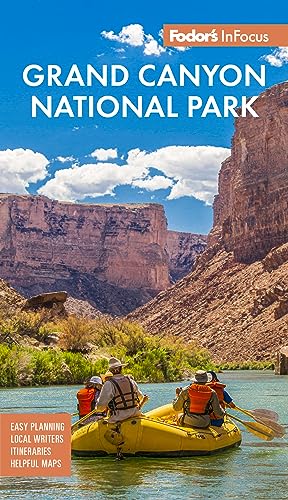White-Water Rafting at the Grand Canyon
So you're ready to tackle the churning white water of the Colorado River as it rumbles and hisses its way through the Grand Canyon? Well, you're in good company: the crafty, one-armed Civil War veteran John Wesley Powell first charted these dangerous rapids during the summer of 1869. It wasn't until 1938, though, that Norman Neville led the first commercial river trip (using plywood boats!) down this fearsome corridor. Running the river has come a long way since then—and since Alexander Grant made the first trip by kayak, in 1941, in a canvas-covered craft he built out of scrap lumber, partly salvaged from an outhouse.
Before You Go
Keep in mind that seats fill up fast due to the restricted number of visitors allowed on the river each season by the National Park Service. Due to the limited availability, reservations for multiday trips should be made a year or two in advance. Lots of people book trips for summer's peak period: June through August. If you're flexible, take advantage of the Arizona weather; May to early June and September are ideal rafting times in the Grand Canyon.
What to Expect
White-water rafting still offers all the excitement of those early days—without the danger and discomfort. Most trips begin at Lees Ferry, a few miles below the Glen Canyon Dam near Page. There are tranquil half- and full-day float trips from the Glen Canyon Dam to Lees Ferry, as well as raft trips that run from 3 to 18 days. The shorter three- and four-day voyages either begin or end at Phantom Ranch at the bottom of the Grand Canyon at river mile 87. On the longer trips, you'll encounter the best of the canyon's white water along the way, including Lava Falls, listed in the Guinness Book of World Records as "the fastest navigable white water stretch in North America." Life jackets, beverages, tents, sheets, tarps, sleeping bags, dry bags, first aid, and food are provided—but you'll still need to plan ahead by packing clothing, a rain suit, hats, sunscreen, toiletries, and other sundries. Commercial outfitters allow each river runner two waterproof bags to store items during the day. Just keep in mind that one of the bags will be filled up with the provided sleeping bag and tarp, which only leaves one for your personal belongings.
Although most people band together as a group, there’s still plenty of open space for solitude. After the first night, most rafters give up on pitching tents and spread their sleeping bags under the stars.




